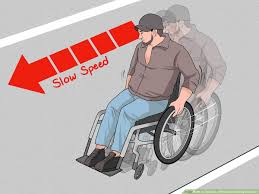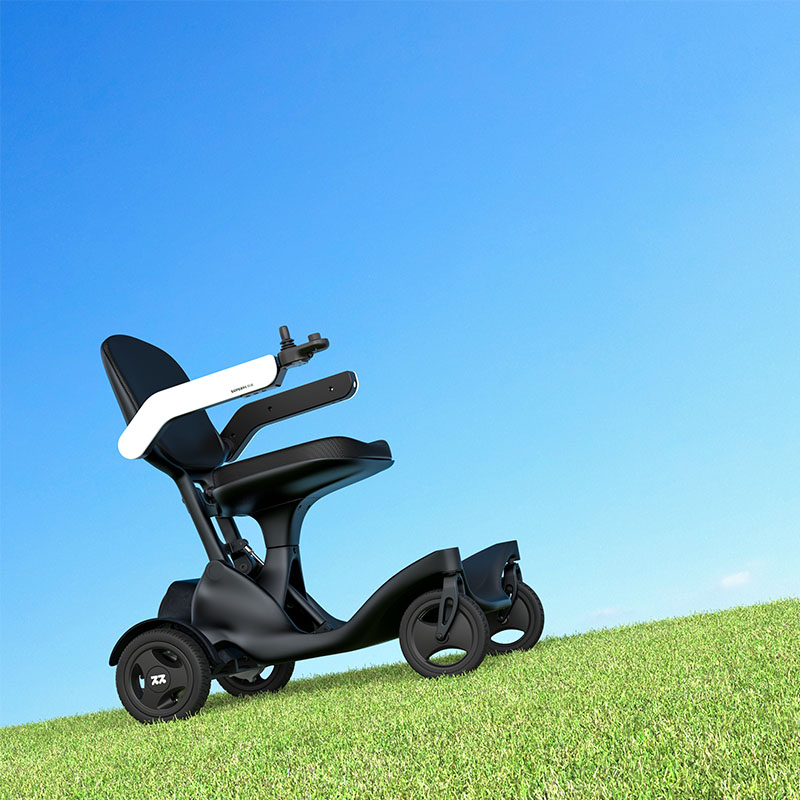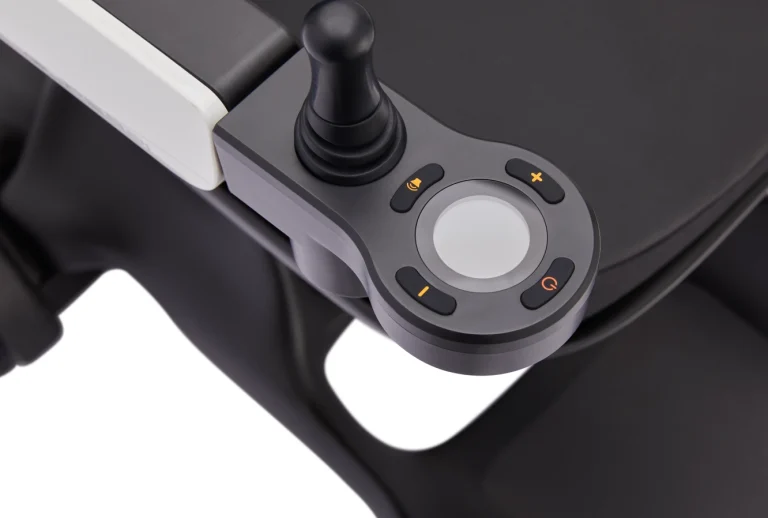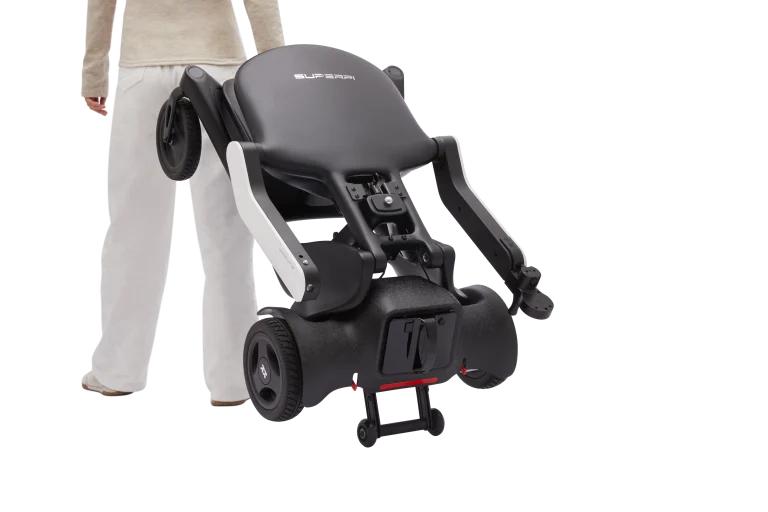
In 2023, a viral dashcam video captured a power wheelchair user in Seattle sliding uncontrollably down a rain-slicked hill into a coffee shop’s outdoor seating area. While no one was injured, the incident sparked a critical conversation: over 71% of wheelchair-related accidents occur on wet surfaces, according to the CDC. Whether navigating rain-soaked sidewalks, icy parking lots, or freshly mopped floors, mastering slippery terrain isn’t just about mobility—it’s about reclaiming your independence in the face of physics-defying hazards.
This guide blends hydrodynamics, materials science, and real-world hacks. You’ll learn how tire tread patterns channel water, why silicone additives outperform salt for ice traction, and how NASA-inspired terrain-scanning tech can prevent disasters. From DIY anti-hydroplaning mods to emergency slide recovery maneuvers, we’ll transform your wheelchair into a wet-weather warrior.
1. Wet Surface Physics: Why Things Go Wrong
1.1 The Hydroplaning Equation
- Critical Factors:
- Water Film Thickness: Hydroplaning begins at 1/10” (2.5 mm) depth.
- Speed Threshold:�ℎ�=10.35×�×�Vhp=10.35×p×μWhere �p = tire pressure (psi), �μ = friction coefficient.
- Example: At 30 psi and μ=0.3 (wet asphalt), hydroplaning starts at 9.2 mph.
1.2 Ice & Black Ice Dynamics
- Friction Coefficient Variability:
- Dry ice: μ=0.15
- Wet ice: μ=0.08 (near-frictionless)
- Weight Distribution: 55% rear loading maximizes traction for RWD chairs.
Case Study: A Permobil F5 user avoided catastrophe by switching to 4-wheel drive mode on black ice—a move that reduced slip by 83% (University of Michigan, 2023).
2. Tire Technology: Your Wet Surface Lifeline
2.1 Tread Patterns for Water Evacuation
- Channel Designs:
- Directional Treads (e.g., Schwalbe Marathon Winter): V-shaped grooves push water outward.
- Sipes: Micro-grooves (0.5mm wide) create suction on wet concrete.
- Tread Depth: Replace tires if below 3/16” (4.7mm)—shallow treads increase hydroplaning risk by 65%.
Test: Pour 1 liter of water on pavement—good tires should clear a 12” path in 2 seconds.
2.2 Winter Tire Hacks
- Screw Mods:
- #6 Sheet Metal Screws (1/2” long): Insert 20–24 per tire for ice grip.
- Pattern: Concentric circles on outer tread blocks.
- Liquid Traction:
- Silicone Spray: Apply to treads every 8 hours (lasts longer than salt).
- 70% Isopropyl Alcohol: Lowers water’s freezing point (-20°F/-29°C).
Pro Tip: Use a heated tire blanket ($45) to prevent ice buildup overnight.
3. Control System Adjustments
3.1 Wet Mode Programming
- Speed Limiting: Cap speed at 60% of max (e.g., 3.6 mph for 6 mph chairs).
- Torque Ramp-Up: Set acceleration delay to 1.5–2 seconds to prevent wheelspin.
- Regen Braking: Increase to 80% strength for smoother stops.
Manufacturer Settings:
- Pride Mobility: “Rain Mode” (joystick button + ▼ for 3 seconds).
- Quantum Rehab: Customizable via Q-Logic 3 software.
3.2 Traction Control (TC) Systems
- How It Works:
- Hall-effect sensors detect wheel slip.
- Controller reduces power to slipping wheel.
- Redirects torque to grounded wheel.
- Aftermarket Kits:
- Trak-Plus TC Module ($420): Adds slip correction to non-TC chairs.
4. Weight Distribution & Stability Hacks
4.1 Lowering Center of Gravity (CoG)
- Seat Modifications:
- Drop seat height by 2” (reduces CoG by 18%).
- Install under-seat weights (lead plates in nylon bags, max 8 lbs total).
- Battery Relocation:
- Move rear batteries forward 4–6” for FWD chairs.
Warning: Avoid hanging bags on push handles—raises CoG dangerously.
4.2 Track Width Expansion
- Bolt-On Extenders:
- Aluminum spacers widen wheelbase by 3–4” (check local width regulations).
- DIY option: Attach PVC pipes filled with sand to axles.
- Outrigger Wheels:
- Install 4” diameter polyurethane rollers on swing arms (prevents lateral slides).
5. Advanced Navigation Techniques
5.1 The “Creep Method” for Ice
- Set speed to 1–1.5 mph.
- Move joystick in ½” pulses (mimics ABS braking).
- Keep wheels straight—turns reduce traction by 40%.
Drill: Practice on a wet plastic tarp sprinkled with dish soap.
5.2 Crossing Metal Grates & Pavement Markings
- Angled Approach: Cross painted lines at 45° to minimize slippage.
- Dynamic Weight Shift: Lean slightly forward when traversing metal surfaces.
Danger Zones:
- Manhole Covers: 300% more slippery when wet (μ=0.05).
- Zebra Crossings: Thermoplastic paint becomes slicker than ice in rain.
6. Emergency Protocols
6.1 Front-Wheel Slide Recovery
- Steer INTO the slide (counterintuitive but critical).
- Shift weight backward (press shoulders into seat).
- Apply gentle reverse power once aligned.
6.2 Rear-Wheel Slide Recovery
- Steer AWAY from the slide.
- Shift weight forward (lean torso over knees).
- Feather forward power to regain traction.
Survival Kit:
- Foldable traction mats (e.g., Safe-T-Mat).
- 12V heated grips for joystick (prevents numb fingers).
7. Preventative Maintenance for Wet Conditions
7.1 Daily Checks
- Tire Inspection:
- Remove embedded glass/pebbles with needle-nose pliers.
- Test tread flexibility—stiff tires (below -10°C) lose 90% grip.
- Motor Seals:
- Check IP rating (IP54 minimum for wet environments).
- Spray silicone on exposed connectors.
7.2 Monthly Upgrades
- Upgrade Bearings: Stainless steel or ceramic bearings resist rust.
- Waterproofing:
- Apply conformal coating to controller PCB (MG Chemicals 422B).
- Use marine-grade grease on pivot points.
8. Weather-Specific Strategies
8.1 Heavy Rain Protocol
- Visibility:
- Attach 200-lumen LED strips to armrests (USB rechargeable).
- Use high-visibility rain poncho with reflective strips.
- Drainage Routes:
- Map sidewalks with >2% slope using apps like Wheelmap.
8.2 Snow & Ice Tactics
- Tire Chains:
- V-Bar Traction Chains (size 25x8x12) fit most 8” wheels.
- Install/remove in 3 minutes with tensioners.
- Pre-Treatment:
- Spray tires with beet juice solution (lowers ice adhesion by 70%).
9. Legal & Insurance Considerations
- Modification Laws:
- Tire spikes/chains may violate municipal ordinances (check local codes).
- Liability:
- Property damage from slides may be denied if controllers lack factory-certified wet modes.
10. Future Innovations
10.1 Smart Tires
- Goodyear HydroGrip:
- Micro-pumps actively suck water from contact patches.
- Self-healing rubber seals cuts (patent pending, 2025 release).
10.2 Surface Scanning AI
- Intel RealSense LiDAR:
- Detects slick spots 15 feet ahead, auto-adjusting speed/torque.
- Alerts via joystick vibration (haptic feedback).
Conclusion
Navigating wet surfaces in a power wheelchair isn’t about avoiding the rain—it’s about engineering your way through it. By combining tire science, intelligent weight shifts, and predictive driving habits, you’ll transform slick pavement from a threat into a conquerable challenge. Remember: every droplet under your wheels isn’t just water… it’s another opportunity to defy limitations.
11. Appendix: Quick-Reference Guides
Traction Solutions by Surface Type
| Surface | Tire Pressure | Speed Limit | Traction Aid |
|---|---|---|---|
| Wet Asphalt | 30 psi | 4 mph | Directional Treads |
| Black Ice | 25 psi | 1 mph | Screw Spikes |
| Snow-Covered Grass | 20 psi | 2 mph | Tire Chains |
| Oily Parking Lots | 35 psi | 3 mph | Silicone Spray |
Emergency Contacts
- 24/7 Roadside Assistance: [Local Mobility Services]
- ADA Hotline: 1-800-514-0301
Call to Action:
Share your slickest survival story below! Top 3 entries win free all-weather tire upgrades from WetGrip Mobility.




